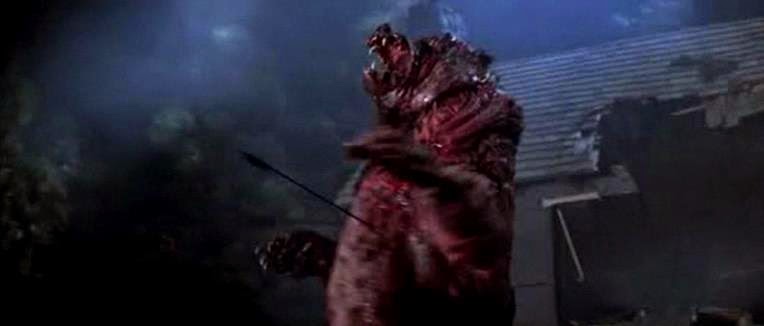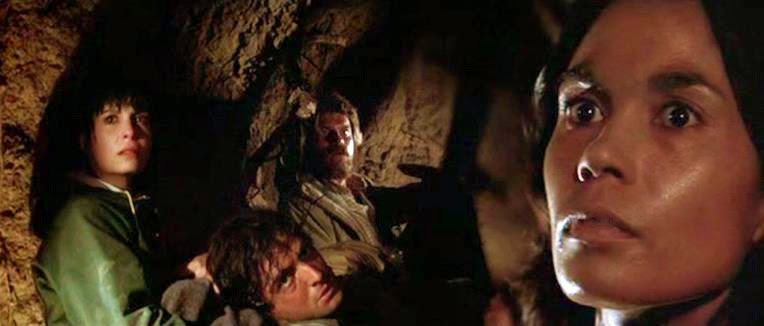
This much-maligned but hugely enjoyable eco tract-cum-monster movie by John Frankenheimer is one of the most sublime junky pleasures I’ve stumbled upon in a while. Frankenheimer’s unmoored, gun-for-hire phase in the late ‘70s, though reputedly bedevilled by a drinking problem, had already produced his rock-solid thrillers French Connection II (1975) and Black Sunday(1977), and Prophecy quickly declares pretensions above and beyond the glut of Jaws(1975) rip-offs it surely belonged to. The opening credits unfold over a series of semi-abstracted shots, at first merely lights drifting in the dark that soon prove to be torches wielded by men hiking through deep forest at night: when the credits end their quiet trudging gives way to frantic pursuit, boots thundering across the earth and dogs howling. Hallucinatory ambience turns into frenetic motion and urgency. The men prove to be rangers on the hunt for missing lumberjacks and Native American eco-terrorists, only to find themselves at the mercy of a malevolent and inimical force waiting for them in the dark. Frankenheimer shifts to a daylight shot of mangled, half-eaten corpses lying near pellucid Arcadian waters as languidly beautiful orchestral music rises. This is the first of many refrains to an almost David Cronenberg-esque obsession with physical destruction and perversion of natural forms, contextualised in a seemingly Edenic locale, where the industrial travesties are invisibly leeching into the earth and the body, and the by-product is now lurking in the bush ready to eat you.
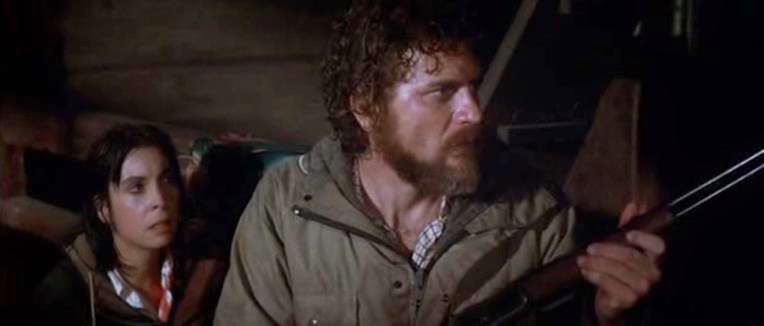
The hero is Robert Foxworth’s glumly dedicated, lefty do-gooder public health inspector Dr. Robert Verne (after the previous year’s Invasion of the Body Snatchers, health inspectors were having an Indian summer as Hollywood heroes) who’s burnt out his conscientious spirit ministering to inner city tenements. He and his orchestra cellist wife Maggie (Talia Shire) head to a forested area in Maine (although obviously actually filmed in British Columbia), as an EPA pal asks Robert to help arbitrate in a dispute between a paper mill and the forest’s owners, who call themselves Original Peoples, or “Opies.” Robert and Maggie are quickly treated to a glimpse of how heated the conflict has become as mill boss Bethel Isley (Richard Dysart, warming up for more monster business in The Thing, 1982) tries to barge through a cordon thrown up by Opie leaders John (Armand Assante) and Ramona Hawks (Victoria Racimo), resulting in a chainsaw-vs-axe duel between John and Isley’s goon Kelso (Everett Creach) that almost gets John killed. Isley gives Robert and Maggie a tour of the parent company’s logging activities and the mill, where all seems above board. But Robert soon sees unnaturally huge salmon and tadpoles, before killing a maddened, mutated racoon that invades his and Maggie’s cabin. He connects with John and Ramona, and they show him multiplying evidence that something grotesque is happening to both their fellow tribal members and to the local wildlife, leading to the discovery of a bear cub that’s been born as hideously mangled and tortured as the mutant baby of Eraserhead(1977).
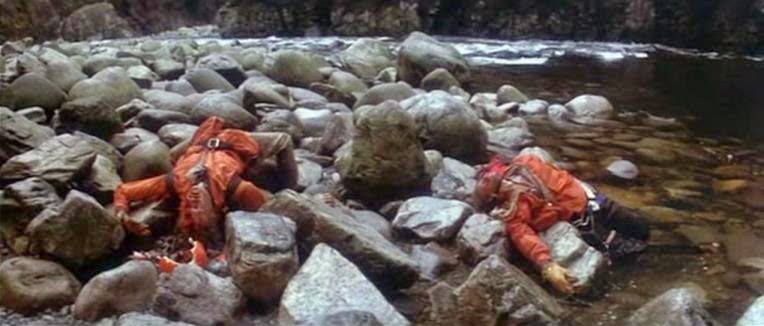
What’s all this got to do with the local legend of the baleful, protective demon Katahdin, which Ramona’s elder grandfather, Hector M’Rai (George Clutesi), claims to have seen, and describes as having “part of everything in God’s creation” in its obscene physiognomy? Plenty, it turns out, because the mill’s actually been dumping mercury into the lake, which sinks to the bottom and won’t show up in water testing but has seeped into everything and has, with its mutagenic properties, created dragons. The notion that Native American myth could coincide with a very real threats standing in for natural payback for man’s ravaging of the Way of Things was pretty common in post-Jaws monster movies, including in Claws, Orca (both 1977), and The White Buffalo(1978), and even, in a different fashion, the magnificently whacko The Manitou (1978). Prophecy might have felt a bit old-hat in that regard by the time it came out. Prophecyalso treads similar territory to Grizzly(1976) and Claws in turning the woodlands into a claustrophobic place where any stray bush might hide a roaring terror. More interestingly, the script by David Seltzer has telling similarities to his prior big hit as a screenwriter, The Omen(1976), in playing on paranoid fears about modernity’s tense relationship with ethical codes inherited from pre-technological societies – the wormwood star of The Omen’s obsessive source text Revelation has surely fallen in this film – and parental anxiety over unborn children.
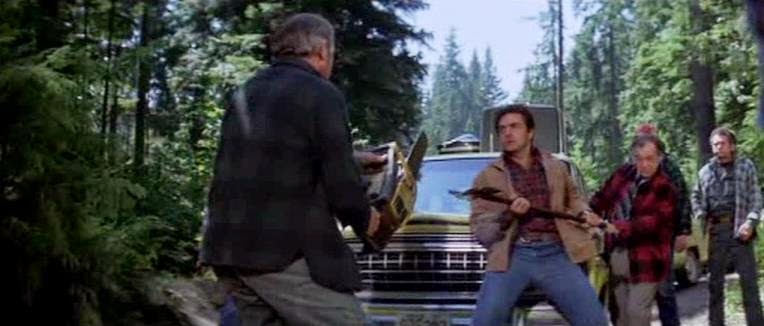
For most of the first hour, Prophecy feels like a melodrama about marital tensions and environmental and land rights issues, Red Desert (1965) reset in the woods. Robert’s ambivalent intensity smoulders and Maggie is increasingly tormented by her secret pregnancy, knowing that Robert doesn’t want to bring children into a troubled world but unable to face an abortion. The film’s efforts to seem important and timely, drawing on the terrible Minamata poisonings in Japan as inspiration for mutant monster shenanigans, are more than a touch heavy-handed. And yet the theme of natural perversion, with an edge of body-horror grotesquery apparent in gruesome visual fragments and pervading the dramatic landcsape, gives the film a disquieting punch rare to the usually clean-cut monster genre. This aspect dovetails with the theme of parental unease and intensifies it with sadistic glee, once it becomes clear that in drinking the local water supply Maggie has placed their unborn child in danger of the mutagenic toxin. In the film’s final phases she’s stuck playing clinging mother to the misshapen bear cub, tied to the wailing thing that’s an actualisation of every parental nightmare imaginable. This touch adds to the film’s ghoulish intensity, which builds and combusts suddenly in a third act that ranks high in the pantheon in fight-and flight thrill-rides, and the scarcity of monster action before this, whilst a touch puzzling as it plays out, helps the film in this regard.
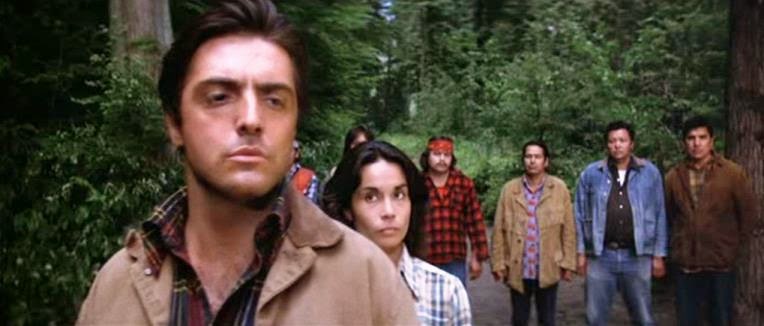
After the opening, only one sequence showing the Katahdin’s deadly work intrudes before the relentless last act, as the beast is heard as a dread rumbling in the woods overheard by the hiking Nelson family on a bucolic afternoon, before father (Burke Byrnes) and his two kids (Mia Bendixsen and Johnny Timko) are attacked in their night camp. Young Timko in his sleeping bag is grabbed up by the monster and then hurled against a rock, which explodes in a shower of stuffing feathers. This moment is the film’s most well-known image, generally regarded as a goofy moment of strangeness by genre fans, but what’s interesting about it is that Frankenheimer here works a variation on the more famous moment from The Manchurian Candidate (1962), when Senator Iselin is shot in the heart through the milk carton he holds, the milk pouring out in a startlingly odd simulacrum of flowing blood. Here the feathers again stand in for blood and guts Frankenheimer doesn’t want to show and replaces it with something rather surreal and redolent of symbolism for slain innocence. That’s not to say it works, exactly, as a visual flourish, but it’s not just random weirdness. There is a kitschy quality to some aspects of the film, with the dated make-up and animatronic effects, particularly in the Katahdin’s look, which suggests a rough sketch for Chris Walas’ Brundlefly crossed with a melted Barney the Dinosaur. And yet the hefty budget and all the scope for staging that allows for once wasn’t squandered, because Frankenheimer and his editor Tom Rolf give the film a pulp vivacity as well as a veneer of committed artistry.
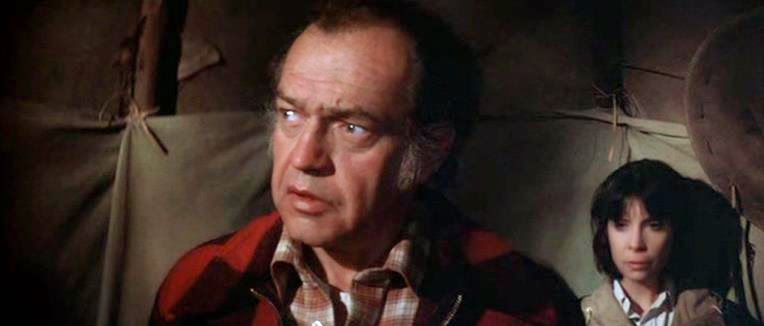
The odd, stylised tone of the opening for instance is justified later as Frankenheimer uses the same technique in reverse as the real monster business gets going, shifting from furore to a tense, stark quiet. The Katahdin, which is actually a grossly deformed and mutated bear, attacks a gathering at Hector’s tribal encampment. The beast forces the humans to flee into underground storage tunnels for a scene where Frankenheimer uses sound here memorably, attuning the audience to the desperate panting of the terrified people who listen to hideous ends for those trapped above, and then crane their ears, trying to detect whether the monster is still waiting above. Frankenheimer surveys the actors’ faces in clever multi-plane shots and then zeroes in to read their individual, sweating terror, before delivering a gleefully nasty punch-line as the first to stick their head up gets it ripped off. Frankenheimer might have been trying to prove desperately that he wasn’t slumming in loading the film with such showy effects mixed with self-serious themes, and yet he leapt happily and with real zest into pure horror territory when the time came.
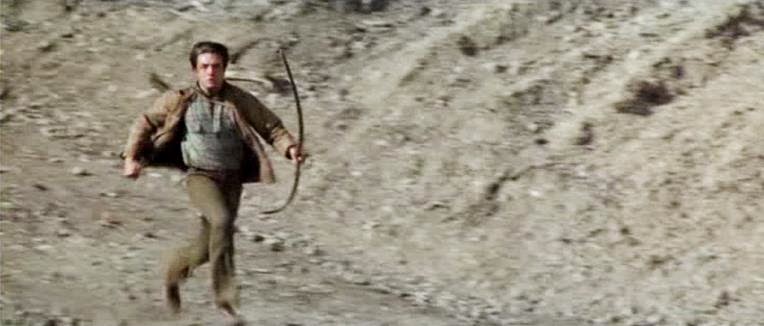
The last half-hour is therefore compulsively gripping as Robert, Maggie, John, Ramona, and sundry other players have to try to escape the remote woods and elude the Katahdin, which proves devilish in both its invulnerability and predatory cunning as it tracks the protagonists, driven to destroy in its wounded rage. Isley makes a mad dash for a remote antenna array to try and call in aid, whilst the others, in a marvellously tense and relishable sequence that seems to draw on The Wage of Fear (1953) for inspiration, crawl their way to town on a painfully slow-moving truck, scanning the forest with searchlights in vigilance for the beast that lurks in the dark. The very climax throws in silhouetted maulings, beheaded men, a fog-shrouded pier, underwater monster breathing, and a brief besiegement in a cabin as the remaining heroes make a stand, with breathless verve. There’s even one of those black-out shocks right before the end credits, capping off the film with a gloriously cheesy switchback that underlines its final absurdity in just the right way. The casting of Shire and Foxworth is a nice reminder of a time when actual adults were allowed to star in this sort of thing, and indeed the film as a whole, in its belief that this sort of fare could sustain audience interest through such character drama, seems a bit of a relic now. Young Assante all but oozes charisma and has dash to spare, and yet he’s just as enjoyably overripe as ever, somehow managing to overact even with his eyes as they stare through the substance of material things and invite martyrdom by chainsaw. Prophecyisn’t exactly what you’d call reputable pleasure, and yet it is, in its way, a quintessential monster movie experience.
